CAA News Today
Nominations Open for CAA Juries
posted by CAA — May 11, 2023
CAA invites nominations and self-nominations for individuals to serve on our Awards for Distinction, Publication Grant, Fellowship, and Travel and Support Grant juries. Terms begin July 2023.
Candidates must possess expertise appropriate to the jury’s work and be current CAA members. They should not hold a position on a CAA committee or editorial board beyond May 31, 2023. CAA’s president and vice president for committees appoint jury members for service. Materials are due to CAA by June 1, 2023.
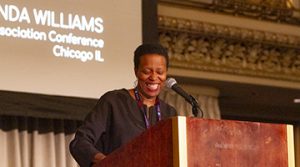
Amanda Williams speaks at Convocation at CAA’s 108th Annual Conference in Chicago
AWARDS FOR DISTINCTION JURIES
CAA has vacancies in the following juries for the annual Awards for Distinction for three years (2023–2026). Terms begin in July 2023.
- Art Journal Award (1 vacancy)
- The Alfred H. Barr Jr. Award/Alfred H. Barr Jr. Award for Smaller Museums, Libraries, Collections, and Exhibitions for museum scholarship (2 vacancies)
- Charles Rufus Morey Book Award for non-catalogue books in the history of art (1 vacancy)
- Frank Jewett Mather Award for art criticism (2 vacancies)
- Arthur Kingsley Porter Prize for Art Bulletin articles (1 vacancy)
- The CAA/American Institute for Conservation Award for Distinction in Scholarship and Conservation (1 vacancy)
- Jury for the Artist Award for Distinguished Body of Work, Distinguished Artist Award for Lifetime Achievement, and Distinguished Teaching of Art Award (1 vacancy)
- Excellence in Diversity Award (3 vacancies)
- Distinguished Feminist Awards for Scholars and Artists (1 vacancy)
FELLOWSHIP AND SCHOLARSHIP JURIES
CAA has vacancies on our Professional Development Fellowship juries for three years (2023–2026). Terms begin in July 2023.
- Professional Development Fellowships for Art History (2 vacancies)
- Professional Development Fellowships for Visual Art, CAA-GOLDEN Scholarship Program, and Michael Aurbach Fellowship for Excellence in Visual Art (3 vacancies)
TRAVEL/SUPPORT GRANT JURIES
CAA has vacancies on our jury for three years (2023–2026). Terms begin in July 2023.
- Art History Fund for Travel to Special Exhibitions (3 vacancies)
HOW TO APPLY
Nominations and self-nominations should include a brief statement (no more than 150 words) outlining the individual’s qualifications and experience and a CV (an abbreviated CV no more than two pages may be submitted). Please send all materials by email to Cali Buckley: cbuckley@collegeart.org. Nominations must be sent as a Microsoft Word or Adobe PDF attachment.
For questions about jury service and responsibilities, contact cbuckley@collegeart.org.
Deadline: June 1, 2023
Join the CAA Board of Directors!
posted by CAA — May 01, 2023
CAA seeks nominations of individuals passionate about shaping the future of the organization by serving on the Board of Directors for the 2024–2028 term. The board is responsible for all financial and policy matters related to CAA, promoting excellence in scholarship, and encouraging creativity and technical skills in design and art practice. CAA’s board is also charged with representing the membership regarding current issues affecting the visual arts and humanities.
Nominations and/or self-nominations must include the following:
- Résumé/CV
- Brief statement of interest (250 words maximum)
- Nominee’s name, affiliation, and e-mail address
- Name, affiliation, and e-mail address of nominator (if different from nominee)
Please send all information and/or any questions via e-mail to Maeghan Donohue, CAA Chief of Staff & Director of Strategic Planning, Diversity, and Governance, with the subject line: Board of Directors Nomination.
Deadline: July 10, 2023.
The Art Bulletin Seeks Editorial Board Members
posted by CAA — Mar 21, 2023
**THESE POSITIONS HAVE BEEN FILLED. NOMINATIONS ARE CLOSED**
CAA invites nominations and self-nominations individuals to serve on The Art Bulletin Editorial Board for a four-year term, July 1, 2023–June 30, 2027.
The ideal candidate has published substantially in the field and may be an academic, museum-based, or independent scholar; institutional affiliation is not required. The Art Bulletin features leading scholarship in the English language in all aspects of art history as practiced in the academy, museums, and other institutions.
The editorial board advises The Art Bulletin Editor-in-Chief and assists by seeking authors, articles, and other content for the journal; performs peer review and recommends peer reviewers; may propose new initiatives for the journal; and may support fundraising efforts on the journal’s behalf. Members also assist the editor-in-chief to keep abreast of trends and issues in the field by attending and reporting on sessions at the CAA Annual Conference and other academic conferences, symposia, and events in their fields.
The Art Bulletin Editorial Board meets three times a year, with meetings in the spring and fall plus one at the CAA Annual Conference in February. The spring and fall meetings are held by teleconference. Members pay travel and lodging expenses to attend the conference in February if held in person. Members of all editorial boards volunteer their services to CAA without compensation.
Candidates must be current CAA members in good standing and should not be serving on the editorial board of a competitive journal. Members may not publish their own work in the journal during the term of service. CAA encourages applications from colleagues who will contribute to the diversity of perspectives on The Art Bulletin Editorial Board and who will engage actively with conversations about the discipline’s engagements with differences of culture, religion, nationality, race, gender, sexuality, and access. Nominators should ascertain their nominee’s willingness to serve before submitting a name; self-nominations are also welcome. Interested applicants—both self-nominated or nominated by someone else—should submit a CV and a cover letter as one PDF document to Eugenia Bell, Editorial Director, ebell@collegeart.org.
Deadline: April 30, 2023
The Art Bulletin Seeks Reviews Editor
posted by CAA — Mar 21, 2023
**THESE POSITIONS HAVE BEEN FILLED. NOMINATIONS ARE CLOSED**
Reviews Editor Opening
The Editorial Board of The Art Bulletin seeks nominations and self-nominations for the position of reviews editor for a three-year term July 1, 2024–June 30, 2027 (with service as incoming reviews editor designate July 1, 2023–June 30, 2024). The Art Bulletin, published quarterly by CAA, features leading scholarship in the English language in all aspects of art history as practiced in the academy, museums, and other institutions.
Candidates should be art scholars with stature in the field and experience in editing book and/or exhibition reviews; institutional affiliation is not required. Candidates should be published authors of at least one book.
The reviews editor is responsible for commissioning all book and exhibition reviews in The Art Bulletin. He or she selects books and exhibitions for review, commissions reviewers, and determines the appropriate length and character of reviews. The reviews editor also works with authors and CAA’s editorial director in the development and preparation of review manuscripts for publication. He or she is expected to keep abreast of newly published and important books and recent exhibitions in the fields of art history, criticism, theory, visual studies, and museum publishing. This is a three-year term, which includes membership on the Art Bulletin Editorial Board.
The reviews editor attends the three annual meetings of the Art Bulletin Editorial Board held three times a year: in the spring and fall plus one at the CAA Annual Conference in February. The fall and spring meetings are currently held by teleconference. Members are expected to pay travel and lodging expenses to attend the conference in February. Members of all editorial boards volunteer their services to CAA without compensation. The reviews editor submits an annual report to CAA’s Board of Directors.
Candidates must be current CAA members in good standing and should not be serving on the editorial board of a competitive journal or on another CAA editorial board or committee. CAA encourages applications from colleagues who will contribute to the diversity of perspectives on the Art Bulletin Editorial Board and who will engage actively with conversations about the discipline’s engagements with differences of culture, religion, nationality, race, gender, sexuality, and access. Nominators should ascertain their nominee’s willingness to serve before submitting a name; self-nominations are also welcome. Please email a letter describing your or your nominee’s interest in and qualifications for appointment, a CV, and your contact information to Eugenia Bell, Editorial Director, at EBell@collegeart.org.
Deadline: April 30, 2023. Finalists will be interviewed on the afternoon of Friday, May 5.
caa.reviews Seeks Board Member
posted by CAA — Mar 21, 2023
**THESE POSITIONS HAVE BEEN FILLED. NOMINATIONS ARE CLOSED**
caa.reviews seeks a new Editorial Board Member to fill the post of Emerging Professional, defined as an active member of CAA who is in graduate school or in the first two (2) years of their career. The Emerging Professional will serve a four-year term, July 1, 2023–June 30, 2027.
CAA encourages applications from candidates with a strong record of scholarship who are committed to the imaginative development of caa.reviews. An online journal, caa.reviews is devoted to the peer review of recent books, museum exhibitions, and projects relevant to the fields of art history, visual studies, and the arts.
The editorial board advises the editor-in-chief and field editors for the journal and helps them to identify books and exhibitions for review and to solicit reviewers, articles, and other content for the journal. The editorial board guides the journal’s editorial program and may propose new initiatives for it. Members stay abreast of trends and issues in the field by attending and reporting on sessions at the CAA Annual Conference and academic conferences, symposia, and other events in their fields.
The caa.reviews Editorial Board meets three times a year, twice in the spring and fall and once at the CAA Annual Conference in February. Members also attend the annual meeting of the caa.reviews Council of Field Editors at the Annual Conference. Members pay their travel and lodging expenses to attend the meeting at the conference. Meetings in the spring and fall are currently held by teleconference. Members of all editorial boards volunteer their services to CAA without compensation.
Candidates must be current CAA members and should not currently serve on the editorial board of a competitive journal or another CAA editorial board or committee. Nominators should ascertain their nominee’s willingness to serve before submitting a name; self-nominations are also welcome. Please email a statement describing your interest in and qualifications for appointment, a CV, and your contact information to Eugenia Bell, Editorial Director, ebell@collegeart.org. Please include the subject line caa.reviews Emerging Professional.
Deadline: April 30, 2023; finalists will be interviewed in early May.
CAA Staff Spotlight: Mira Friedlaender
posted by CAA — Mar 10, 2023
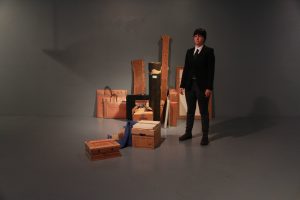
On Guard, performance centering on the installation of long-stored objects from the Bilge Civelekoglu Friedlaender Estate, FiveMyles, Brooklyn, 2014.
Mira Friedlaender is CAA’s Senior Manager of Annual Conference and Programs. Since joining CAA in 2018, Mira has worked with a significant portion of members (new and returning!) and continues to do so each year to support their participation in conference sessions and events. She produces the event with CAA staff, committees, and partners, attending to myriad details while also working to refine and reshape the conference each year in support of CAA’s long-term strategic goals. Mira was previously an exhibition manager for nonprofits such as No Longer Empty and HappyLuckyNo1. She also worked in television production and co-owned a restaurant in Brooklyn, New York.
As an artist and independent scholar of art stewardship, Mira has exhibited locally and internationally, and her work has been featured in the New York Times and Bomb. She has held residencies at the American Center in Bangladesh and Recess in New York. She is the Director of the Bilge Friedlaender Estate, was a fellow in the Art & Law Program, and cocurated Bilge Friedlaender: Words, Numbers, Lines in Istanbul.
“Since her death, I’ve been stewarding the art my mother Bilge Friedlaender (née Civelekoglu) made, beginning more actively in 2014 with my project at Recess, which was still in Soho at that time. I’ve contributed to the scholarship on artist estates through this work and through knowledge sharing; as an artist and artist’s heir I am most interested in performing an emotional institutional critique of the challenges artist-stewards face, particularly those without infinite resources,” explains Mira.
Curated by Işın Önol, Bilge Friedlaender’s never-before-seen works from the 1970s are on view now at Sapar Contemporary in New York City through April 10. Bilge’s work occupies a unique place in the Turkish and Middle Eastern modernist tradition as well as in the history of twentieth-century American art, especially the soulful minimalism of 1970s—not unlike the work of Zarina Hashmi, Etel Adnan, and Huguette Caland. Bilgé’s minimalism is infused with Sufi mysticism, sacred numerology, and reverence for nature and the divine feminine. Her spiritual feminism evolved into an overt ecofeminism as she grew older.
“My mother left Turkey in 1958 to come to the US and be an artist, and she exhibited until her death. Since 2015 there has been a museum show of her work in Istanbul and there have been subsequent opportunities for Bilge’s work, but this is the first time her work has been shown in New York City since 1981. This is a big step for the estate. Next, we are looking to travel this incredible selection of the works on paper and artist books with the goal of expanding the scholarship around Bilge’s artworks and extensive writings.”
Join Mira and curator Işın Önol in conversation with guests on April 4, 6 p.m. ET, at Sapar Contemporary.
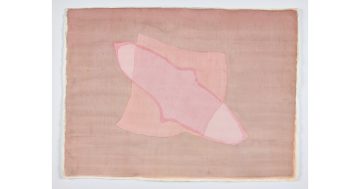
Bilge Friedlaender, Weightless Pink, 1975
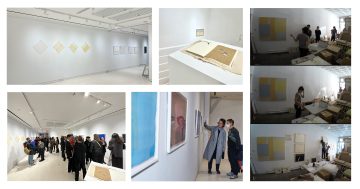
Bilgé: Lifespan of a Horizontal Line, Sapar Contemporary, 2023, and, right column, Half of What’s There, Recess Art, 2014
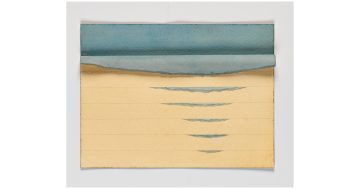
Bilge Friedlaender, Tides Time II, 1975
CAA Signs ACLS Statement on Florida House Bill 999
posted by CAA — Mar 07, 2023
CAA has signed on to a statement issued by the American Council of Learned Societies (ACLS) regarding Florida HB 999. This bill would radically shift Florida’s approach to higher education in a manner that negatively impacts diversity and academic freedom; this is antithetical to CAA’s mission.
CAA stands with ACLS, together with other academic societies, and shares their belief that, if passed, the bill “ends academic freedom in the state’s public colleges and universities, with dire consequences for their teaching, research, and financial well-being.”
The full ACLS statement on Florida HB 999 can be viewed here. CAA encourages individual and institutional members to visit the ACLS website and sign on to the ACLS statement, as well as contact legislators, write op-eds, and proliferate information on social media to fight this bill.
Other learned societies and higher education institutions who have signed the ACLS statement:
American Academy of Religion
American Anthropological Association
American Association for Italian Studies
American Folklore Society
American Historical Association
American Musicological Society
American Philosophical Association
American Political Science Association
American Society for Environmental History
American Sociological Association
Association for Slavic, East European, and Eurasian Studies
Association for the Study of African American Life and History
Association of University Presses
College Art Association
German Studies Association
Latin American Studies Association
Linguistic Society of America
Medieval Academy of America
Modern Language Association
National Council of Teachers of English
National Council on Public History
National Women’s Studies Association
Organization of American Historians
Rhetoric Society of America
Sixteenth Century Society & Conference
Society for Ethnomusicology
Society for Music Theory
Society for the History of Technology
Society of Biblical Literature
World History Association
CAA has also signed on to a Florida HB 999 statement issued by the American Historical Association (AHA) which can be viewed here.
Other organizations who have signed the AHA statement:
African American Intellectual History Society
American Anthropological Association
American Association for the History of Medicine
American Association of University Professors
American Folklore Society
American Philosophical Association
American Society for Environmental History
American Sociological Association
Association for Slavic, East European, and Eurasian Studies
Association for the Study of African American Life and History
Association of Ancient Historians
Association of University Presses
Berkshire Conference of Women Historians
Black Heritage Trail of New Hampshire
Central European History Society
College Art Association
Committee on LGBT History
Conference on Latin American History
Executive Committee of the Czechoslovak Studies Association
French Colonial Historical Society
German Studies Association
H-France
Historians for Peace and Democracy
Immigration and Ethnic History Society
Kurt Vonnegut Museum and Library
Labor and Working Class History Association
LGBTQ History Museum of Central Florida
Linguistic Society of America
Medieval Academy of America
National Association of Diversity Officers in Higher Education
National Council on Public History
National Council of Teachers of English
New England Historical Association
North American Conference on British Studies
North American Society for Oceanic History
Organization of American Historians
PEN America
Polish American Historical Association
Radical History Review
Roy Rosenzweig Center for History and New Media
Shakespeare Association of America
Social Welfare History Group
Society for Austrian and Habsburg History
Society for French Historical Studies
Society for Historians of the Gilded Age and Progressive Era
Society for Textual Scholarship
Society for the History of the Early American Republic
Society for the History of Technology
Society for the History of the Early American Republic
Society for U.S. Intellectual History
Southern Historical Association
Texas Institute of Letters
Tully Center for Free Speech at Syracuse University
Western Society for French History
Woodhull Freedom Foundation
World History Association
Meet the Michael Aurbach Fellowship for Excellence in Visual Art Inaugural Recipient and Honorable Mentions
posted by CAA — Mar 07, 2023
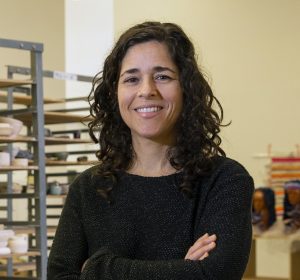
CAA is pleased to announce the first ever recipient of the first Michael Aurbach Fellowship for Excellence in Visual Art: Lauren Sandler.
Lauren Sandler is a ceramic artist and educator whose work deconstructs mythologies and investigates narratives of power and perspective. Sandler exhibits nationally, and gives talks, workshops, and publishes work concerning contemporary and historic issues in ceramics. She holds an MFA in Ceramics from Penn State University, and undergraduate degrees in Anthropology and Ceramics from Ithaca College and SUNY New Paltz. She served on the Board of the National Council on Education for the Ceramic Arts as Director at Large from 2019–22 and is currently Associate Professor and Program Head of Ceramics at Tyler School of Art and Architecture at Temple University.
HONORABLE MENTIONS
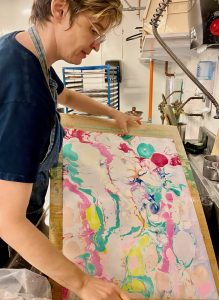
Ellen Wetmore, University of Massachusetts Lowell
Ellen Wetmore is a Professor of Art and Chair of the Department of Art and Design at the University of Massachusetts, Lowell. She is a graduate of the University of Michigan (BFA, BA in Art History) and Tufts University/School of the Museum of Fine Arts (MFA), and joined UMass Lowell in 2007. She is a participant of CAA, UFVA, Cultivamos Cultura, and past member of the Boston Sculptors Gallery. Her awards include a 2017 Berkshire Taconic ART Fellowship and a 2017 Massachusetts Cultural Council Fellowship. Her social concerns include neuro-atypical disabilities, race and teaching, money and art. Wetmore’s current artistic practice reinterprets history, art history, and investigates visual thinking. Wetmore’s projects have been featured at the Boston Cyberarts Art on the Marquee, the Indianapolis Art Center, the Sandwell Arts Trust, Ciné Lumière, London, CologneOff, Germany, the InShadow Festival, Lisbon, and Videoholica in Bulgaria. She is a 2012 School of the Museum of Fine Arts Traveling Fellow and a summer 2015 visiting artist at the American Academy of Rome. Her most recent solo exhibition was a drawing study of the collection at the Fitchburg Art Museum. Her current science collaborations explore printed, fabric-based video displays, text and memory in fat cells, and the characterization of high fire ceramic glazes in a Cambodian wood fired kiln. Her first graphic novel, Dante’s Inferno, is a fictional account of race and the academic hiring process.
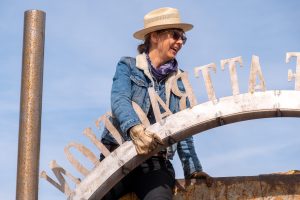
Allison Wiese, University of San Diego
Allison Wiese is an interdisciplinary artist who makes sculptures, installations, sound works, performances, and architectural interventions. Her work is often created for public spaces at the boundaries of or outside institutions, and has been exhibited at, among other venues, Machine Project, Los Angeles, the Museum of Contemporary Art, San Diego and Socrates Sculpture Park, New York. She is the recipient of a Louis Comfort Tiffany Award and has received grants from Art Matters, Creative Capital, the Cultural Arts Council of Houston, and the City of San Diego’s Commission for Arts and Culture. A fellow of MacDowell and an alumna of the Skowhegan School of Painting and Sculpture, Wiese was a Core Fellow of the Museum of Fine Arts, Houston, received her MFA from the University of California, San Diego, and a BA from Brown University. Wiese is an Associate Professor at the University of San Diego.
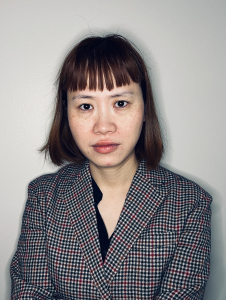
Ziui Vance, Temple University
Ziui explores the semiotics of bodies, their chaotic signals, and spatiality. She makes the paintings, objects, and installations inside the disputed realm between affection and dominance, rules and reality. Characterized by a play-like process, Ziui describes a variety of body configurations with an intricate intensity that reflected on gender, ethnicity, and perceptions: an infinite tapestry of imagery associated with her exoneration from the polar complexities of being Chinese in the United States.
ABOUT THE FELLOWSHIP
The Michael Aurbach Fellowship for Excellence in Visual Art recognizes and honors CAA members who have obtained an MFA or equivalent in studio art and are currently teaching studio classes full-time or part-time. The purpose is to support these artist members as they fulfill their goals as visual arts professionals. On an annual basis, CAA will grant a $7,500 award and registration to the CAA Annual Conference to a qualified artist member teaching at an American or international university or community college. A jury of artists will adjudicate the fellowship and a proposal will not be required; the recipient will be selected solely based on their work. Learn more.
CAA 2023 Awards for Distinction
posted by CAA — Feb 06, 2023
CAA announces the 2023 recipients of Awards for Distinction. By honoring outstanding member achievements, CAA reaffirms its mission to encourage the highest standards of scholarship, practice, connoisseurship, and teaching in the arts. With these annual awards, CAA seeks to honor individual artists, art historians, authors, museum professionals, and critics whose accomplishments transcend their individual disciplines and contribute to the profession as a whole and to the world at large.
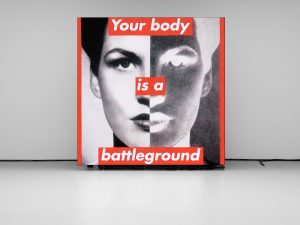
Installation view, Barbara Kruger, David Zwirner, New York, June 30–August 12, 2022. Courtesy David Zwirner.
Among the awards, the Distinguished Artist Award for Lifetime Achievement is presented to Barbara Kruger whose influential works have consistently had viewers question the larger society around them for over four decades.
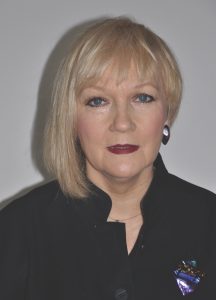
Griselda Pollock
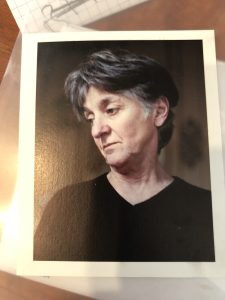
Svetlana Alpers
The Distinguished Lifetime Achievement Awards for Writing on Art are being presented to feminist art historian Griselda Pollock and art historian of northern Renaissance and Dutch Golden Age art Svetlana Alpers.
Art Journal Award
Alfred H. Barr Jr. Award
Julia Burtenshaw, Héctor García Botero, Diana Magaloni, and María Alicia Uribe Villegas, The Portable Universe / El universo en tus manos: Thought and Splendor of Indigenous Colombia (DelMonico Books/Los Angeles County Museum of Art, 2022)
Alfred H. Barr Jr. Award for Smaller Museums, Libraries, Collections, and Exhibitions
No recipient this year
Frank Jewett Mather Award
Eduardo Cadava
Charles Rufus Morey Book Award
Sylvia Houghteling, The Art of Cloth in Mughal India (Princeton University Press, 2022)
Arthur Kingsley Porter Prize
Tomasz Grusiecki, “Doublethink: Polish Carpets in Transcultural Contexts” and Hugo Shakeshaft, “Beauty, Gods, and Early Greek Art: The Dedications of Mantiklos and Nikandre Revisited”
Artist Award for a Distinguished Body of Work
Dawoud Bey
CAA/AIC Award for Distinction in Scholarship and Conservation
Michele Marincola and Lucretia Kargère
Distinguished Artist Award for Lifetime Achievement
Barbara Kruger
Distinguished Lifetime Achievement Award for Writing on Art
Svetlana Alpers and Griselda Pollock
Distinguished Teaching of Art Award
Mary Lum
Distinguished Teaching of Art History Award
No recipient this year
Excellence in Diversity Award
Arlene M. Dávila
Citations:
Art Journal Award
Emilie Boone, “When Images in Haiti Fail: The Photograph of Charlemagne Péralte,” Art Journal, Winter 2022
The 2022 jury has chosen Emilie Boone as the recipient of the 2022 Art Journal Award for the essay, “When Images in Haiti Fail: The Photograph of Charlemagne Péralte.” Boone’s deconstruction of a single photo offers readers an entry into the contested history surrounding the US occupation of Haiti, as well as the attendant visual politics of this period (1915–34). Through close textual analysis of Péralte’s historically significant image, the author weaves together a situated narrative of Haitian visual culture under occupation, interrogating crucial notions of ontology through examination of photographic composition. Boone frames the racialized body as a contested and imagined site rife for adaptation and tampering, first through vernacular photographic techniques, as well as other forms of pictorial representation. In the end, Boone’s text summons an interrogation of tradition, and indeed, of the implicit politics of the medium of photography itself.
Jury members:
Omar Kholeif, Sharjah Art Foundation, Chair
Phil Taylor, George Eastman Museum
Tilo Reifenstein, York St John University
Alfred H. Barr Jr. Award
Julia Burtenshaw, Héctor García Botero, Diana Magaloni, and María Alicia Uribe Villegas, The Portable Universe/El universo en tus manos: Thought and Splendor of Indigenous Colombia (DelMonico Books / Los Angeles County Museum of Art, 2022)
The Western concept of El Dorado has long impacted the study of the ancient cultures of Colombia, overshadowing the manifold stories that pre-Columbian art weaves across time and space. How can museum curators uncover those stories, illuminate their nuanced complexities, and present them to the public in engaging and innovative ways? The Portable Universe/El universo en tus manos is the remarkable outcome of just such an undertaking. Both the catalog and related exhibition are the result of a six-year collaboration between the Los Angeles County Museum of Art and Museo del Oro, Bogotá. Most importantly, the curators collaborated with a contemporary Indigenous community in Colombia, the Arhuaco of the Sierra Nevada de Santa Marta. The Portable Universe reveals that pre-Columbian artifacts—including goldworks, ceramics, and textiles—are not mere objects, but rather messengers that link living beings (people, animals, plants) and places across space and time. Each is, in brief, a portable universe. The Arhuaco explain that these messengers need to be “nourished,” or brought back to life. Thus, the concept of nourishment enters curatorial practice: a form of sustained, reciprocal attention that goes well beyond customary models of stewardship. Incisively written, gorgeously illustrated, and ingeniously designed, this groundbreaking book brings together interdisciplinary research (in history, archaeology, anthropology, environmental studies, and ornithology) and Indigenous knowledge to propose a new approach to the material and spiritual culture of ancient Colombia, one which underscores the transformative powers of cross-cultural dialogue. A major advance in the study of Indigenous art, the book spurs us to creatively rethink our notions of both the museum and scholarship.
Jury Members:
Benjamin Anderson, Cornell University, Co-chair
Karen Lang, Independent Scholar, Co-chair
Francesca Pietropaolo, Independent Scholar
Jochen Wierich, Aquinas College
Frank Jewett Mather Award
Eduardo Cadava
The jury has awarded this year’s prize to Eduardo Cadava, based on his elegant book Paper Graveyards (MIT Press, 2021) and in recognition of his long career within the field of art criticism, especially his influential theories of photography. Paper Graveyards is the culmination of decades of Cadava’s thinking about how images and technical media actively transform social and political life, and his far-ranging case studies (including examinations of artists Leon Golub, Nancy Spero, Fazal Sheikh, and Susan Meiselas) orient themselves towards activist practices that speak to and from the margins. Wending through ruminations on materiality, forms of documentary, and modes of circulation, Cadava writes a new account of what it means to pay visual witness in the face of constant emergency.
Jury members:
Julia Bryan-Wilson, Columbia University, Chair
Nicole Fleetwood, New York University
Kim Theriault, Dominion University
Charles Rufus Morey Book Award
Sylvia Houghteling, The Art of Cloth in Mughal India (Princeton University Press, 2022)
The Art of Cloth in Mughal India by Sylvia Houghteling focuses on the production, circulation, and consumption of South Asian textiles in the sixteenth and seventeenth centuries, a period of both global manufacturing dominance and intense artistic creativity for Indian cloth-makers. The book offers a uniquely comprehensive account of the complex meanings of cloth as it moved across the Mughal imperial courts, the kingdoms of Rajasthan, the Deccan sultanates, and the British Isles, all the while remaining attentive to the richness of regional specialties. Houghteling brilliantly weaves together a capacious range of topics including issues of patronage and labor, iconography and symbolism, technical and ecological considerations, connections with poetry and other fine as well as decorative arts, and the sensory experience of the various textiles, from gauzy muslins to tent panels. Starting with an account of the Emperor Akbar’s patronage of dyers and weavers, Houghteling analyzes the elaborate Bikaner Robe, which Akbar’s successor Jahangir presented to a provincial raja. She moves on to the elegant textile culture of the Rajput Court of Amber and the kalamkari cloth of Machilipatnam, ending with a survey of the flourishing market for Hindustani cloth in early modern Britain, evidence of a new global cosmopolitanism that linked the Mughal court with the Stuarts. The book’s handsome design, color illustrations, and vivid writing make Art of Cloth an engaging read for scholars and general readers alike.
Jury members:
Lisa Schrenk, University of Arizona, Chair
John Cunnally, Iowa State University
Laura Anne Kalba, University of Minnesota, Minneapolis
J. P. Park, University of Oxford
Andrew Wasserman, American University
Arthur Kingsley Porter Prize
Tomasz Grusiecki and Hugo Shakeshaft
Tomasz Grusiecki, “Doublethink: Polish Carpets in Transcultural Contexts,” The Art Bulletin, September 2022
That art objects move, and that in doing so their meaning changes, is now widely accepted, but conceptualizing and describing the ways in which such changes occur still often eludes us. Tomasz Grusiecki’s winning essay provides a framework for doing just that, in its elegant examination of the lives and plural significances of carpets in early modern Eastern and Central Europe. Borrowing George Orwell’s notion of “doublethink,” Grusiecki shows, with a keenly historical eye, that there was little tension for early modern patrons between the provenience of carpets in Safavid Persia or Ottoman Turkey and their adaptation into local European contexts, where they became fundamental to the construction of individual and burgeoning national identities. Grusiecki moves past the simple charting of the “surprising” provenances of individual objects to weave a complex web in which he embraces the inevitable messiness of movement—and of meaning—in early modernity. Grusiecki’s transcultural doublethink promises to be a concept of great utility for our discipline as it continues to grapple with these issues.
Hugo Shakeshaft, “Beauty, Gods, and Early Greek Art: The Dedications of Mantiklos and Nikandre Revisited,” The Art Bulletin, May 2022
In his groundbreaking article “Beauty, Gods, and Early Greek Art: The Dedications of Mantiklos and Nikandre Revisited,” Hugo Shakeshaft transforms narratives around the topic of beauty in the religious art of archaic Greece. He moves away from such still-influential Enlightenment frameworks as Kant’s account of aesthetic autonomy and Winckelmann’s concern with timeless aesthetic values to examine the question of beauty from a historicizing vantage point. In order to assess how beauty mattered for those who patronized, created, employed, and observed artworks in ancient Greece, Shakeshaft focuses on two anthropomorphic votive figurines—a bronze statuette dedicated by Mantiklos (ca. 700–675 BCE) and a marble life-size statue dedicated by Nikandre (ca. 660–630 BCE). In his deeply researched discussion, he reconsiders these celebrated objects through a layered analysis of their forms, inscriptions, and materials as well as by reading them alongside aesthetic values expressed in the writings of Homer and Hesiod. In particular, he calls attention to the ideal of charis, a rich concept that can be translated as “beauty,” “favor,” “gratitude,” and “grace,” to show how beauty was inextricably tied to ideas of reciprocity. Ultimately, Shakeshaft posits that beauty needs to be treated as rigorously as any other interpretive category, and—far from being a universal—demands contextualized cultural awareness.
Jury members:
Adam Jasienski, Southern Methodist University, Chair
Susanna Berger, University of Southern California
Christine I. Ho, University of Massachusetts Amherst
Artist Award for a Distinguished Body of Work
Dawoud Bey
Dawoud Bey has a photographic career spanning four decades, beginning in 1975 with the seminal five-year portrait project of everyday life in Harlem. His work has recently traveled in a retrospective titled An American Project” at the San Francisco Museum of Modern Art and co-organized by the Whitney Museum of American Art. In his recent publication, Dawoud Bey: Two American Projects, his work explores race, African American history and underrepresented communities; featuring portraits memorializing the six children who were victims of the Ku Klux Klan’s bombing at 16th Street Baptist Church in Birmingham, and a group of black-and-white landscapes made in Ohio where the Underground Railroad once operated. In the 1980s Bey collaborated with artist David Hammons by documenting the performances Bliz-aard Ball Sale and Pissed Off. In 2017 he received the MacArthur Fellowship and is Professor of Photography at Columbia College Chicago where he has taught for over twenty years. Bey’s work is in permanent collections of leading museums, including the Art Institute of Chicago, the Museum of Modern Art in New York, and the Whitney Museum of American Art.
Jury members:
Derek G. Larson, Purdue University, Chair
Stephen Fakiyesi, Independent Artist
Jessica Hong, Art Museum
CAA/AIC Award for Distinction in Scholarship and Conservation
Michele Marincola and Lucretia Kargère
Michele Marincola and Lucretia Kargère are recognized by conservators, curators, and art historians, for their contributions to the study of European sculpture. Their recent, joint publication titled The Conservation of Medieval Polychrome Wood Sculpture: History, Theory, Practice (Los Angeles: Getty Conservation Institute, 2020) is a major contribution to the fields and represents two-decades of collaborative work.
Marincola is the Sherman Fairchild Chair, and Sherman Fairchild Distinguished Professor of Conservation, at the Conservation Center, Institute of Fine Arts, New York University, a position she has held since 2014. Kargère is a Conservator of Medieval Sculptures at the Metropolitan Museum of Art and the Cloisters. Marincola previously worked with Kargère at the Cloisters where they collaborated on conservation and research. Marincola’s contributions to scholarship include research on the sculptor Tilman Riemenschneider and the translation and commentary of Johannes Taubert’s Farbige Skulpturen into English. Kargère, who is known for her work on French sculpture, has collaborated with Maricola and conservation scientists at the Metropolitan Museum of Art on the publications about the materials and techniques used in Medieval polychrome sculpture.
Both Marincola and Kargère are recognized for having educated students and colleagues about the history and conservation of European Medieval polychrome sculpture. Numerous students, interns, and Fellows have benefitted from their expertise both at the Metropolitan Museum of Art and at New York University. Moreover, Marincola and Kargère are known for producing publications and presentations that touch upon important issues in art conservation, art making, art history, and ethics.
Jury members:
Tiarna Doherty, University of Delaware and Smithsonian, Chair
Fernanda Valverde, Amon Carter Museum
Rebecca Rushfield, Rebeccah Rushfield Arts Consultants
Distinguished Artist Award for Lifetime Achievement
Barbara Kruger
Barbara Kruger’s distinct artistic practice has palpably shaped the broader social, cultural, and visual fields for decades. For over four decades, the artist has persistently expanded her practice, exploring new media, from video to large-scale installations, collaborating with popular brands (with some even co-opting her iconic visual language) extending her influence beyond the art world, to pursuing intrepid interventions in the public sphere. Best known for her works with bold, declarative, often imposing and seemingly authorless text in which she overlays appropriated black-and-white imagery, Kruger interrogates mass media and consumer culture’s effects on how we see and understand ourselves. As the artist expressed, “I work with pictures and words because they have the ability to determine who we are, what we want to be and what we become,” and she sees her works as prompts “to question and change the systems that contain us.” With the internet boom, explosion of social media, advertising’s increasingly sophisticated, if not untruthful, tactics, and advertising’s constant presence now from an infinite number of sources, Kruger’s work, past and present, feels more relevant than ever (as seen with numerous and recent solo presentations around the globe). Throughout her dedicated practice, Kruger has reminded us that these issues will continue to raise existential concerns and impact society writ-large until actively contended with.
Jury members:
Derek G. Larson, Purdue University, Chair
Stephen Fakiyesi, Independent Artist
Jessica Hong, Art Museum
Distinguished Lifetime Achievement Award for Writing on Art
Svetlana Alpers and Griselda Pollock
Renowned for her groundbreaking work on Dutch Golden Age painting, Svetlana Alpers’ writings have had a profound impact on the field of art history. A founder of the journal Representations and one of the central figures in the revisionist turn of the new art history, Alpers broke with long-standing approaches to northern European art by asking new questions about visual culture and ways of seeing. In The Art of Describing (1983), her questions about optics and image-making devices ignited scholarship in premodern and modern fields alike. In subsequent publications, Alpers’ notions about the monetary value of art materials and the marketing strategies of artists also proved fertile ground for later scholars. However, the Art of Describing did not only reinvent methodologies for understanding Dutch art, pushing against the field’s reliance on ideas forged in the study of Italian artistic practices; it recast what it means to “describe” art, the ekphrastic basis of our field, effecting the writing of art history ever since.
Professor Emerita from the University of California at Berkeley, where she taught from 1962–98, Alpers continues to publish across and redefine fields ranging from the Baroque to contemporary art and photography history. Widely known for Rembrandt’s Enterprise: The Studio and the Market (1988), which won CAA’s Charles Rufus Morey Book Award in 1990, Alpers has also penned field-changing monographs on Tiepolo, Rubens, and Velázquez. To this list, Alpers has added her latest book, Walker Evans: Starting from Scratch (2020), a monograph on one of the most important photographers of the twentieth century, and part of a subset of her writings that have confronted directly the challenges of photography, as The Art of Describing long ago became required reading in this field. Her recent publications such as Roof Life (2013) make concrete the writerly challenge that her work has always issued to art history, the need to reinvent “how” as well as “what” we say and write about art.
Arguably the leading feminist art historian of the generation after Linda Nochlin, Griselda Pollock first made an impact with a vigorous dissembling of the “artists mythologies and media genius” that attended the canonization of artists such as Vincent van Gogh. She went on to devote close attention to previously devalued women artists such as Mary Cassatt, Eva Hesse, and, more recently, in her innovative Virtual Feminist Museum, Charlotte Salomon. Essays such as “Modernity and the Spaces of Femininity” in her 1987 book Vision and Difference were powerful examples of her strategy of “feminist interventions” into the history of art, rather than falling for the trap of settling for the inclusion of women artists within the prevailing patriarchal structures.
The Award acknowledges this groundbreaking work as well as a wider, far-reaching achievement, ranging across several decades. Pollock’s writing has long refused to stay in its art historical place, to belong to a single position or way of working. Her brand of feminist revisionism constantly engages the social history of art, bridges art history with cinema studies, opens onto the fields of psychoanalysis and cultural geography, while also participating in the debates of postcolonial theory and responding to the imperatives of decolonization. While remaining attentive to the demands of each of these critical disciplines, her writing about art remains passionate, profound, open-hearted, and, always, political.
Jury Members:
Terry Smith, University of Pittsburgh, Chair
George Baker, University of California Los Angeles
Gillian Elliott, George Washington University
Distinguished Teaching of Art Award
Mary Lum
Mary Lum is CAA’s 2023 Distinguished Teaching of Art Award recipient. Lum, an accomplished visual artist in her own right, has been a professor of painting and drawing at Bennington College in Vermont since 2005, and prior to that taught at the New York State College of Ceramics at Alfred University. Among her many notable contributions as an educator is her ability to nurture a passion for art making in her students that has taken many of them from foundational studies, to graduate school, and to successful professional practices as artists, art directors, curators, and academic professors.
Steven Frost, Assistant Professor and Faculty Director, University of Colorado Boulder says of his time as a foundation student under Lum; “With her help I began to understand a creative practice needed to be fed by more than time in the studio . . . She took the time to bring me up to speed and prepare me for the professional world.”
Rebekah Modrak, foundation student, current professor University of Michigan, STAMPS School of Art and Design says of Lum “Thank goodness her main concern was the possibility that there might be compelling artists lurking below our early and often tenuous attempt at artmaking.” “When I think of moments in my life that changed my trajectory,” says former student and UK-based art director and curator Christine Serchia, “Mary Lum is responsible for multiple moments.”
CAA is excited to recognize Mary Lum’s more than two decades of teaching with this award.
Jury members:
Derek G. Larson, Purdue University, Chair
Stephen Fakiyesi, Independent Artist
Jessica Hong, Art Museum
Distinguished Feminist Awards
Nalini Malani and Marsha Meskimmon
Nalini Malani’s work has been recognized in solo exhibitions at over thirty international institutions. Her work has embraced painting, video, stop-motion, and other time-based media, while engaging issues of women’s equality in India, where her family took refuge in 1946 after the partition. Malani’s early career in painting gave way to a more focused approach to time-based media in the 1990s, making works such as the 1998 Remembering Toba Tek Singh, a meditation on nuclear testing in India and Pakistan. Focusing on the aftereffects of the devastating partition of India and Pakistan, Malani’s work has been liberal in its use of media types and productions, including the emotive devices of theater.
Malani has turned this unflinching attention to the ways in which the woman’s body has been used as a pawn in games of nationalism and internationalism. Her Mother India: Transitions in the Construction of Pain (2005) combined archival footage and other imagery, a series of juxtapositions that shed new light on the depicted contorted bodies of women. She continues this thread in a 2020 multimedia performance of images projected onto the Taj Mahal Hotel, inspired by the week-long gang rape and murder of an eight-year-old girl. Malani’s work is a beacon; her work is eminently important now as the world bears witness to an increase in femicide and gender-based violence.
Marsha Meskimmon, PhD is a professor of art history who studies, teaches, and writes on global feminisms. Her groundbreaking scholarly work has been matched by a commitment to promoting and mentoring women in the field. Meskimmon is editor for Drawing In, and she is also a consultant editor for Open Arts Journal. She has authored or co-authored twelve books over her career, with a sustained focus on the political stakes of feminism and its ability to shed light on the circulation of art and the discourse of aesthetics. With Amelia Jones, she edits the book series Rethinking Art’s Histories for Manchester University Press, a series that has promoted books that rethink art and its histories, and has used feminist thought in relation to “global” and non-Western approaches to art history. Her work on the exhibition WACK! Art and the Feminist Revolution marked an important return to feminism in the art world, a redefinition of the stakes and of the purview of its ideas. Her essay for the exhibition succeeded in arguing why feminism is global—describing it as a constellation of approaches, places, and times. It models an interdisciplinary and collaborative idea of feminism, not a static theory that spreads from the North Atlantic out to world. Her tireless work on behalf of women in the arts is a model for scholars who do their work out of a stated commitment.
Jury Members:
Delinda Collier, School of the Art Institute of Chicago, Chair
Yvonne Love, Penn State University
Midori Yoshimoto, New Jersey City University
Excellence in Diversity Award
Arlene M. Dávila
Arlene M. Dávila is Professor of Anthropology and American Studies at New York University and founding director of The Latinx Project. Established in 2018, The Latinx Project is an interdisciplinary space focusing on US Latinx Art, Culture and Scholarship. In addition to hosting artists and programs, it functions as a platform fostering critical public programming.
Professor Dávila’s has published extensively on Latinx cultural politics in museums and contemporary art, media, and urban environments to explore the intricacies and ultimate challenges of visualizing Latinx art and culture. Her research spans urban ethnography, the political economy of culture and media, consumption, immigration and geographies of inequality and race.
Professor Dávila’s publications, with a focus on public imagery and cultural politics, include Latinx art: Artists, Markets and Politics (Duke University Press, 2020), El Mall: The Spatial and Class Politics of Shopping Malls in Latin America (University of California Press, 2016), the revised edition of Latinos Inc: Marketing and the Making of a People (University of California Press, 2012), Culture Works: Space, Value, and Mobility Across the Neoliberal Americas (NYU Press, 2012), and Latino Spin: Public Image and the Whitewashing of Race (NYU Press, 2008). Dávila also co-edited the collection Contemporary Latina/o Media: Production, Circulation, Politics (NYU Press, 2014). Her articles have appeared in AZTLAN: A Journal of Chicano Studies and Centro: Journal of the Center for Puerto Rican Studies.
Carmenita Higginbotham, Virginia Commonwealth University, Chair
Anne H. Berry, Cleveland State University
Kelly Walters, Parsons School of Design
Meet the 2023 CAA Annual Conference Kress Travel Grant Recipients
posted by CAA — Jan 30, 2023
Recognizing the value of the exchange of ideas and experience among art historians, the Kress Foundation is offering support for scholars participating as speakers at the 2023 CAA Annual Conference. The scholarly focus of the papers must be European art before 1830.
Samuel H. Kress Foundation CAA Annual Conference Travel Fellows 2023
Presentation: “Ordering the Ground: Ornamental Parterres and the Emergence of Academic Botany”
Session: Making Green Worlds (ca. 1450–1700)
Lauren Cannady, University of Maryland, College Park
Rather than the depiction of scholarly work taking place in Sébastien Leclerc’s engraved headpiece for Denis Dodart’s Mémoires pour servir à l’histoire naturelle des plantes (1676), it is a scene of the direct observation of nature glimpsed through a window that is most striking. Three men stand in an arabesque-patterned parterre to more closely examine the individual plants that compose the garden. One uses his walking cane to point out a specimen—literally embedded in the undulating scrollwork of the parterre—to his companions. This ornamental plantation—or manner of “ordering of the ground” as Francis Bacon lamented in his essay “Of Gardens” (1625)—reflects the dominant style of contemporary aristocratic pleasure and academic botanic gardens across northern Europe. Such impositions of formal, physical order on the natural world, however, belie the acknowledged chaos of seventeenth-century natural history. Bacon, among others, contended that empirical observation could best be used to make sense of the “many things in nature [that] have been laid open and discovered,” including organic material from around the world collected by Europeans in the name of colonialism. The renewed emphasis on empiricism did little, however, to rectify linguistic confusion and imprecise nomenclature, particularly pressing issues for the emerging field of botany. As a repository for nonnative flora and living laboratory for the production of naturalist knowledge, the patterned garden proved a visibly reliable way to order the natural world in early modern Europe.
Presentation: “’ A “New World” for Profit: Christopher Columbus’s Search for Gold on Genoese Silver”
Session: Making Green Worlds (ca. 1450–1700)
Jillian Laceste, Boston University
A seventeenth-century silver vase made by the Flemish silversmith Gio Aelbosca Belga for Agostino Pallavicino, the future doge of Genoa, depicts a moment of encounter between Christopher Columbus and Indigenous Americans. The vessel emphasizes a one-sided transaction by showing Indigenous figures greeting the explorer with gifts at the shore of the Atlantic. While painted Columbian artworks created in early modern Genoa treat the explorer’s arrival as a heroic maritime feat or moment of introduction of Christianity into the Americas, silver vessels such as Aelbosca’s differ because they depict Columbus’s journey for Cipangu—a land rich with gold—on the surface of silver, a precious metal crucial to Spanish colonization of the Americas. This paper will analyze the subject matter and material to address the presentation of Europe’s fertile “New World” contained within Aelbosca’s vessel. By connecting it to the history of the Americas—in particular Columbus’s failed search for gold but eventual outpouring of silver—I argue that this vase offers a view of the Americas that emphasizes not only its novelty and foreignness but also its utility for mining and profit.
Presentation: “Architectural Drawing, Information Management, and Early Modern Science: Wendel Dietterlin Drafts the Architectura (1593–98)”
Session: Drawing (New) Stories
Elizabeth Petcu, University of Edinburgh
This paper surveys the massive corpus of drawings associated with Wendel Dietterlin’s 1593–98 Architectura treatise to establish how architectural drawing in sixteenth-century Europe came to model practices for managing visual information in scientific research. To craft the Architectura drawings, Dietterlin and his assistants wielded tactics of annotation, bricolage, folding, and copying that had long aided architects in stimulating creativity, exposing problems, saving materials, enhancing productivity, facilitating communication, and documenting progress. I compare the 164 known Architectura drawings—among the largest surviving bodies of Renaissance architectural treatise drawings—to botanical and geological drawings in the collections of physician Felix Platter and natural historians Conrad Gessner and Ulisse Aldrovandi to show that natural philosophers (i.e. early modern scientists) came to derive similar benefits from such drawing techniques. I argue that Dietterlin’s tactics for orchestrating his Architectura’s wealth of visual information attests that, by 1600, techniques of visual research originating in architectural drawing circulated freely between makers of architectural drawings and natural philosophers. I thereby expose how makers of architectural drawings and natural philosophers in Europe began to exchange and codevelop parallel, empirical methods for forming knowledge.
Presentation: “Problematising the Notion of ‘Eastern European Art’: Two Case Studies of a Multiplicity”
Session: What is Eastern European Art?
Marta Zboralska, University of Oxford
Radek Przedpełski, Trinity College Dublin
This presentation aims to challenge the ontological assumption of there being a monolithic ontological entity such as “Eastern European art,” dialectically elaborated in its opposition to “Western art,” which then needs to be put on the map in an IRWIN-like gesture. We propose two case studies that problematize such an assumption, arguing instead that starting on the ground and unfolding an analysis from there might offer a more fruitful art-historical path of inquiry. We shall demonstrate that the model of a case study enfolds multiple frameworks of reference cutting across the East/West dichotomy, such as the immediately local or the regional on the one hand, or the long durée of the Anthropocene on the other.
The first case study will outline a media archaeology of Tatar timber mosques/minarets on the territories of the former Grand Duchy of Lithuania, showing how these under-researched media blend aniconism with local contexts and engage a continuum of artefacts and practices including muhir tableaux, hramotka (talismans), siufkanie (sorcery), and fał (divination). This case study argues that these architectural artworks explode the concept of “Eastern Europe(an art).” Instead, they open up a liminal space conjoining Islamicate architecture, Turkic animism, the “Long Baroque” of the Polish-Lithuanian Commonwealth as well as the vernacular regional traditions of timber building construction and ornamentation.
The second case study will zoom in on the ideas of Polish writer Witold Gombrowicz to consider the issue of regional artistic identity. As noted by literary scholar Anita Starosta, Gombrowicz refused the binary choice of either affirming Polishness or aspiring to Europeanness. Instead, it was within the periphery’s “not quite-ness” that the writer located the potential to “reveal Europe’s immaturity.” Looking at Diary by the American appropriation artist Sherrie Levine, a 2019 work inspired by Gombrowicz, this case study will argue for embracing the incompleteness of “Eastern Europe” as an area of art-historical enquiry.
Presentation: “‘Narrating’ the Landscape: Pictorial and Aesthetical Inventiveness to Portray the Essence of Nature”
Session: Eighteenth-Century Atmospheres: Science, Politics, Aesthetics
Marie Beaulieu Orna, France
Leaving the port of Naples for Sicily in 1777, the connoisseur Richard Payne Knight (1750–1824) wrote in his travel diary: “The infinite variety of tints were all harmonized together by that pearly hue, which is particular to that climate. (This tint very particularly marks Claude Lorraine’s Coloring). As we advanced into the open sea, the colours and forms seemed to sink into the Atmosphere and grow gradually indistinct, till at last the Sun withdrew its rays and left all in darkness.” Disclosing the term “atmosphere” in its literal meaning, Knight’s remark paradoxically reveals the fundamental role of optical theories and their interpretation in artistic practice in giving rise to the figurative essence of this same word, or to “spreading the tone” as Coleridge expressed it in Biographica Literaria (1817). Following Knight’s example, certain late eighteenth-century British landscapists aimed at conveying their personal impression felt upon observing the natural scenery, especially by handling color in travel sketches. Their Grand Tour became an artistic and aesthetical laboratory, into which they experimented with materials and processes in order to depict exotic landscapes with sensibility, intended for “polite” amateurs. The specific training these artists as well as these amateurs shared contributed to relate their mutual perception of nature and to develop this specific sense of “atmosphere.” This paper intends to demonstrate this artistic and aesthetical pivotal turn, embedded in the British contemporary scientific and philosophical context.
Presentation: “Imperial Materials: Extracting White Marble during the 18th and 19th Centuries”
Session: The Extractive Nineteenth Century
Amalie Skovmøller, University of Copenhagen
Since antiquity, white marble has been extracted from quarries centered in the Mediterranean, and transported to workshops to be crafted into sculpture and architectural decoration. While marble extracting activities declined following the collapse of the Roman Empire, they resumed with new intensity during the eighteenth century, peaking in nineteenth as quarries were sought out throughout Europe, Scandinavia, and in the US. Intertwined with Imperial policies, ideas about aesthetics and nation building, white marble assumed the role as prime material for high art and monumental embellishment. Traditionally studied as an omnipresent, abstract material with little regard to the complex infrastructures framing its extraction, the role of white marble consumption in relation to histories of colonialism remains peripherally explored. This paper centers on the intense marble extraction initiated by the Danish king Frederik V (1723–1766), when the Danish Empire included all of Norway. The king initiated expeditions into Norwegian territories to locate new sources of white marble, and the quarries established at Fauske, near Oslo, and in Hordaland secured the desired stones, which were extracted in thousands of blocks and shipped to Copenhagen. This paper explores the sculptures and architectural decoration in Copenhagen, deriving from the intense exploitation of Norwegian resources, as representing the Imperial ideologies, extractive capitalism, and colonial expansion politics of the Danish Empire during the latter eighteenth century. In doing so, the paper also touches upon the global economics and ideologies of marble extraction and circulation taking place throughout Europe and the US during the eighteenth and nineteenth centuries.
Presentation: “Byzantine Embroideries and the Entangled Visual Traditions of Eastern Europe”
Session: What is Eastern European Art?
Catherine Volmensky, The University of British Columbia
A late-Byzantine liturgical veil shows the recumbent figure of the dead Christ. Referred to as the aër-epitaphios of John of Skopje, this red silk textile is lavishly embroidered with gold, metallic, and silk threads. Similar types of embroidered veils were found in monasteries and churches throughout the Byzantine empire and its religious sphere. Drawing on a theory of line, this paper discusses the entangled artistic, religious, and economic networks of workshops and patrons shared between Thessaloniki, Mount Athos, and the regions of the Balkan Peninsula. Through this methodology, this paper traces the movement of images across spaces and media and provides a new approach to late and post-Byzantine textiles to demonstrate the vibrant and multifaceted connectivity between the regions of Eastern and Southern Europe. The role of the patron is also questioned in the context of the economic value of silk and gold-figure embroidery during the fourteenth through sixteenth centuries, emphasizing the position of elite women patrons in the Balkans, and how they have been examined or overlooked in previous scholarship. Since the intersection of lines create networks, this methodology also emphasizes a nonhierarchical approach to works created within Byzantium’s religious sphere. The emphasis on communication and interconnected structures offers a grounded methodology with which to examine gold-figure embroidery created and used in religious spaces of the Balkan Peninsula, Thessaloniki, and Mount Athos.
Presentation: “Begarelli, Model for Algardi? Renaissance Clay Modelling as a Precedent of Baroque Marble Sculpting”
Session: The Essence of Things? Limits and Limitlessness in Early Modern Sculpture
Lucia Simonato, Scuola Normale Superiore, Italy
In her monograph on Alessandro Algardi, Jennifer Montagu intuited the influence of Antonio Begarelli’s model on the works of art by the Bolognese Baroque sculptor. Yet, a systematic study of this possible relationship has not followed this intelligent opening. Begarelli was a sculptor who until his death in 1565 made monumental statues in Emilia and in Lombardy, using almost exclusively white-painted terracotta—a choice, according to Vasari, criticized by Michelangelo, who would have said in front of his works: “If this clay were to become marble, woe to the ancient statues!” Reassessing Begarelli as a model for Algardi poses not only an issue of intermediality in the transmission of formal solutions, but also a question on matter’s expressive possibilities. To what extent did the Renaissance terracotta, with its easier naturalistic adhesion and its dynamic spatial conception, offer a model to Baroque marble figuration? How did the dialogue with Begarelli shape Algardi’s use of terracotta modelling within his artistic process as compared, for example, to Bernini’s? This paper will focus on these issues.
In addition, the Samuel H. Kress Foundation has provided funds for alumni of the program to return and take part in our vast network of both international and North American scholars:
- Iro Katsaridou, Greece, 2022
- Tomasz Grusiecki, Canada, 2015
- Halyna Kohut, Ukraine, 2020
- Angeliki Pollali, Greece, 2014


